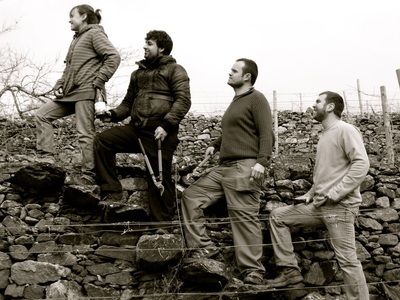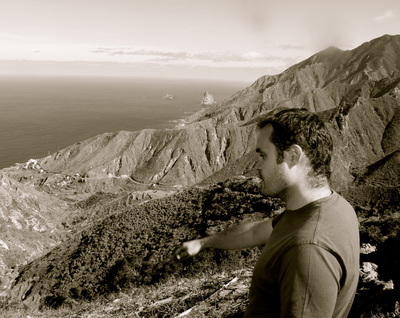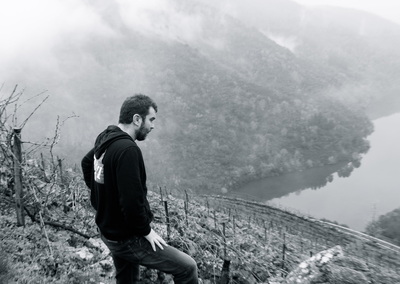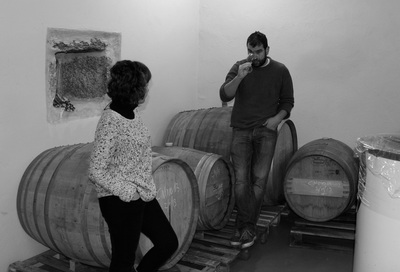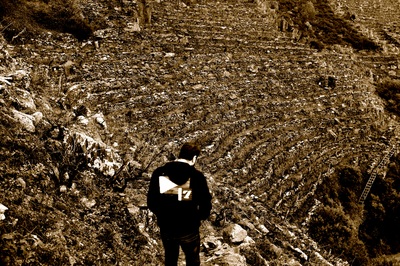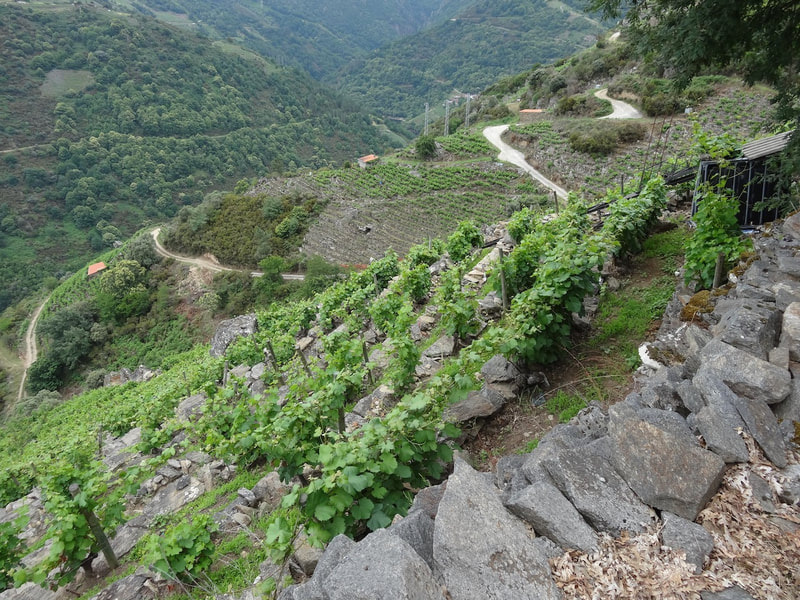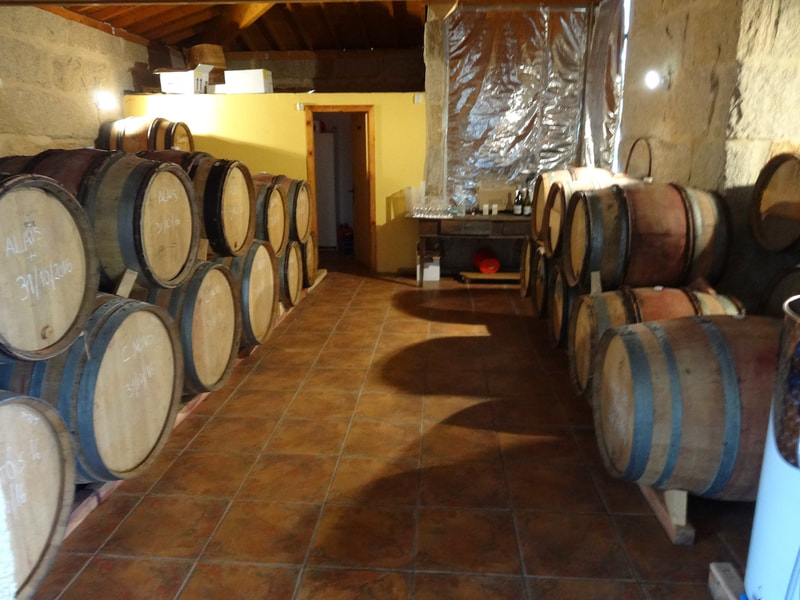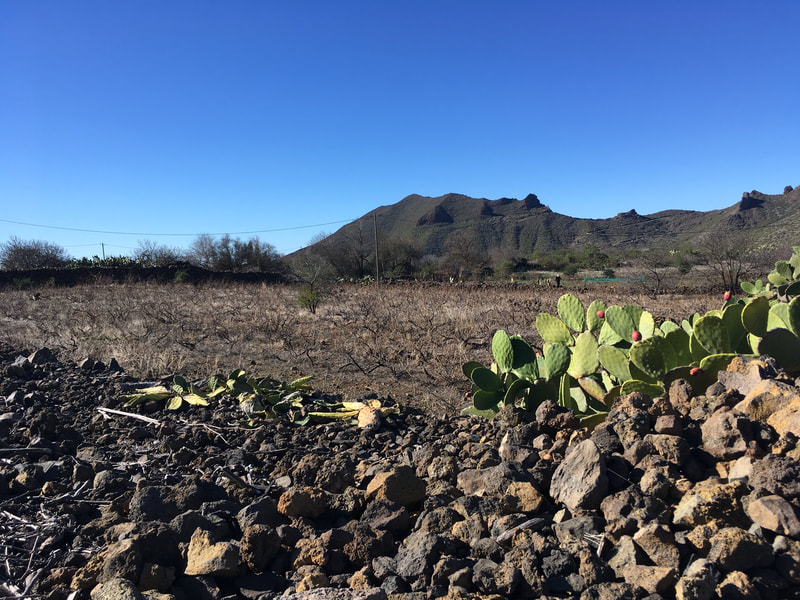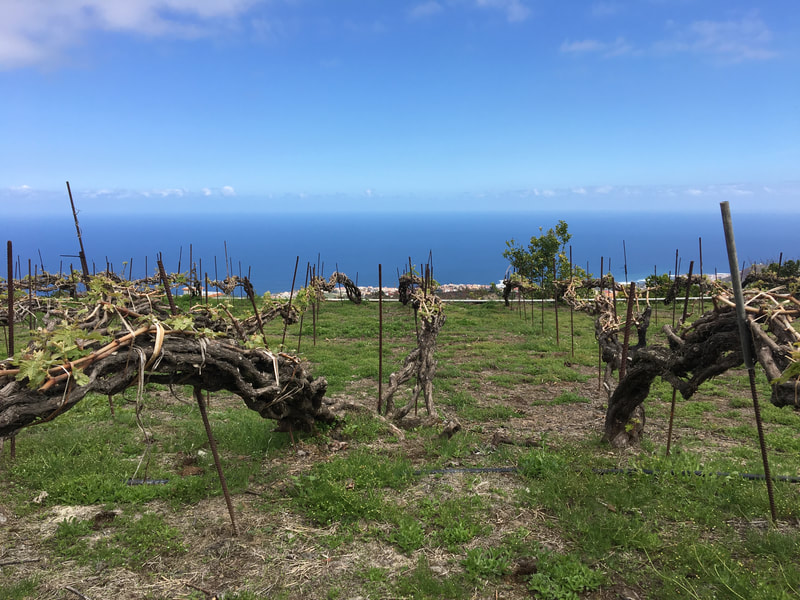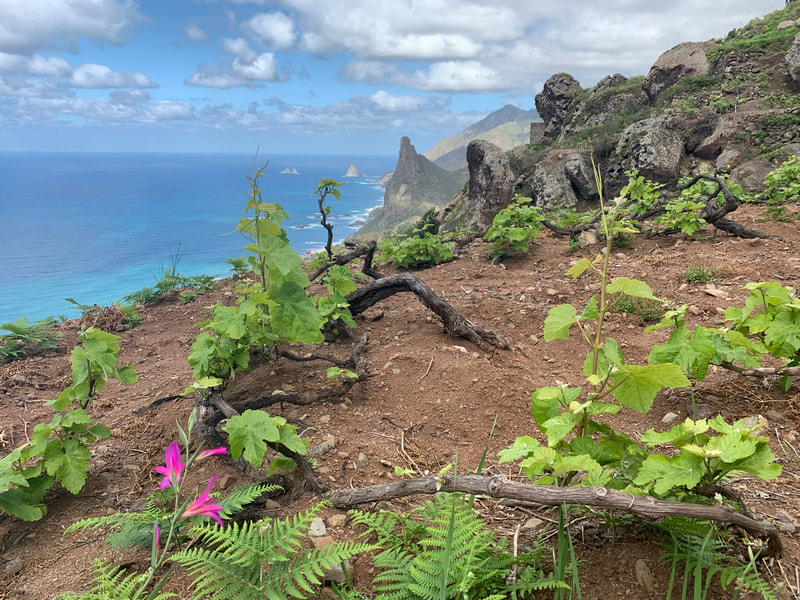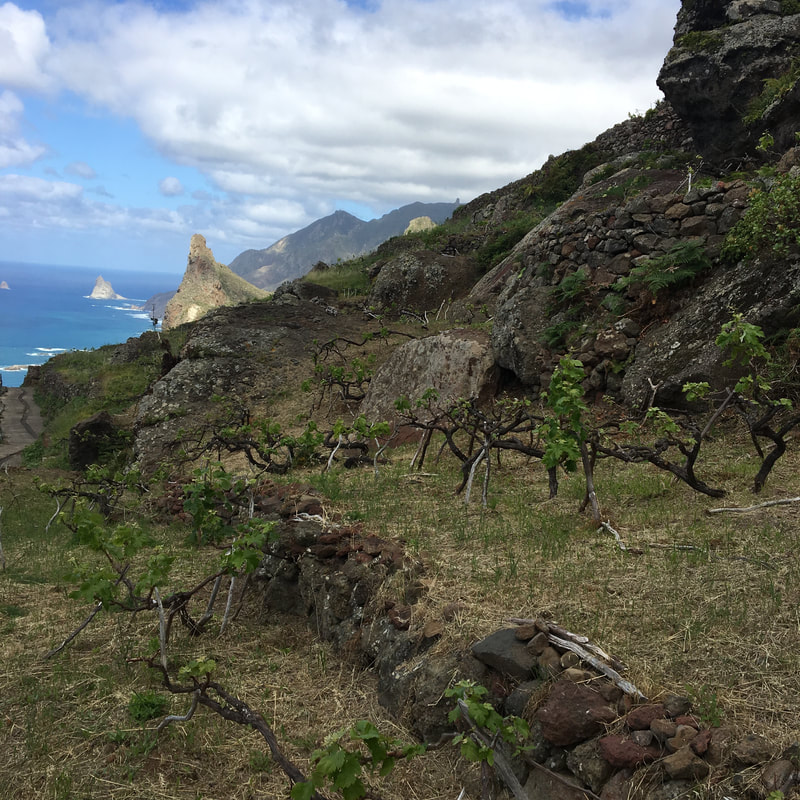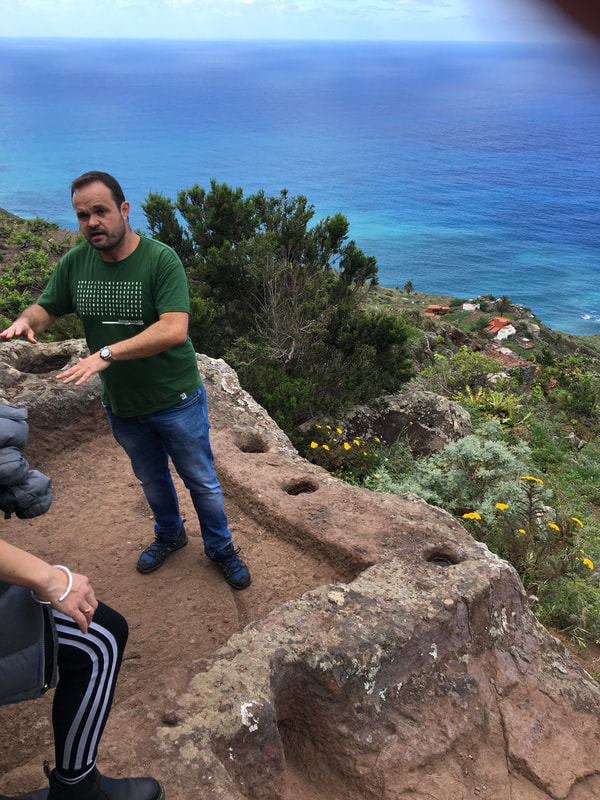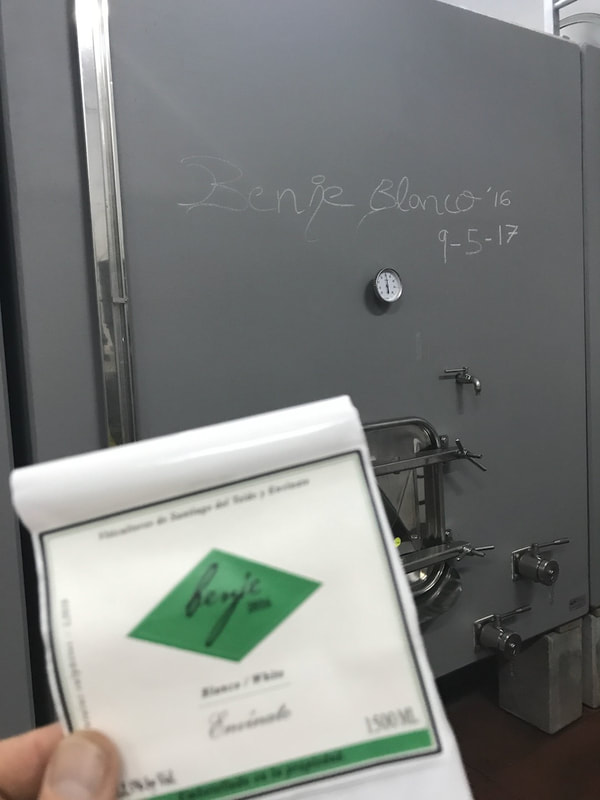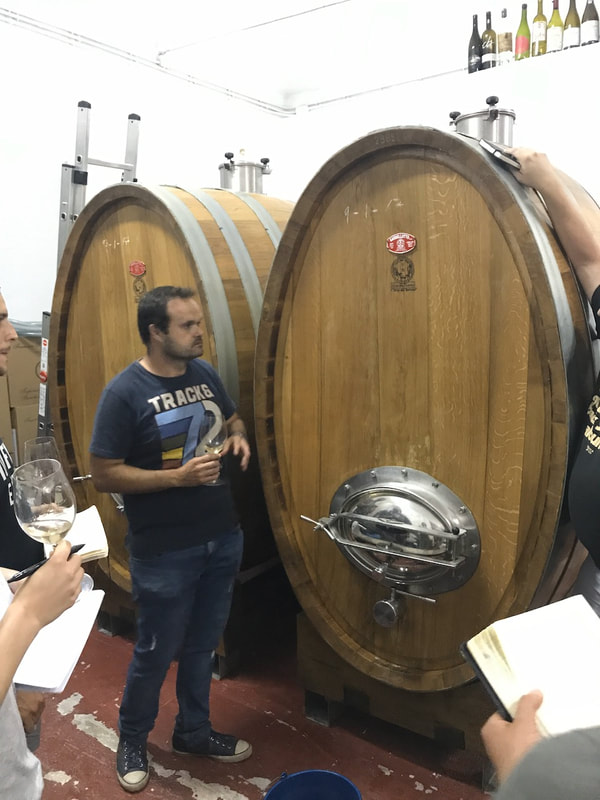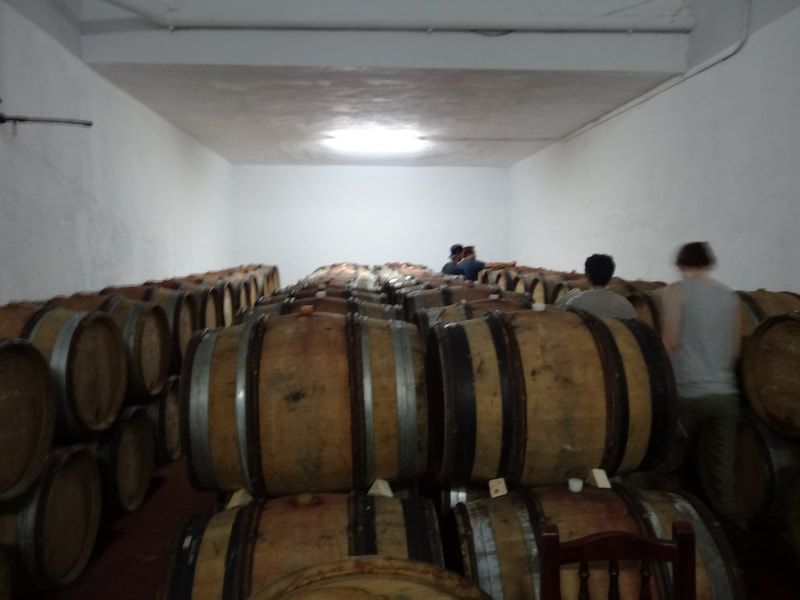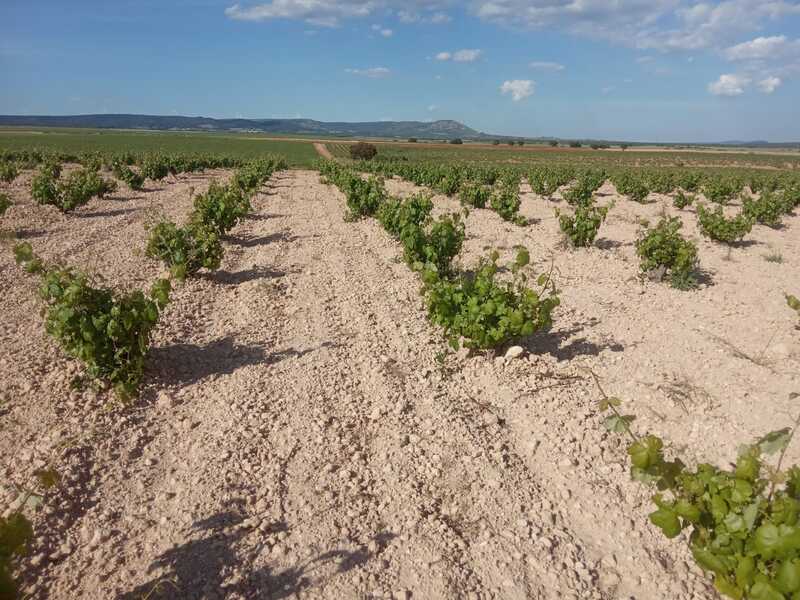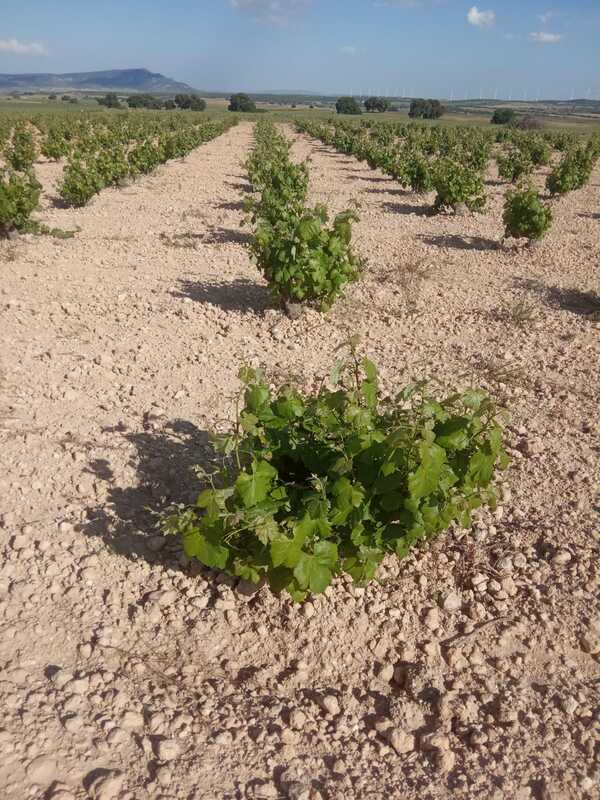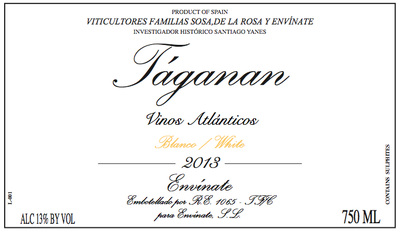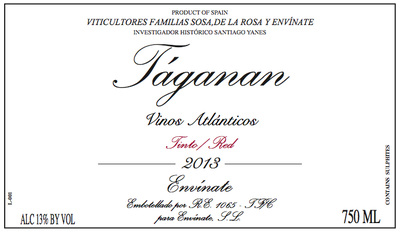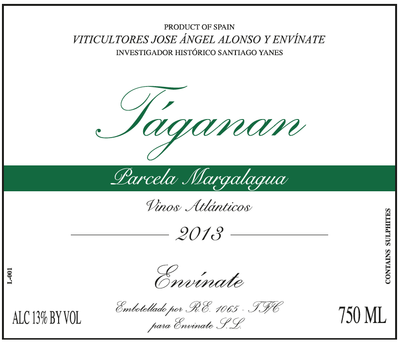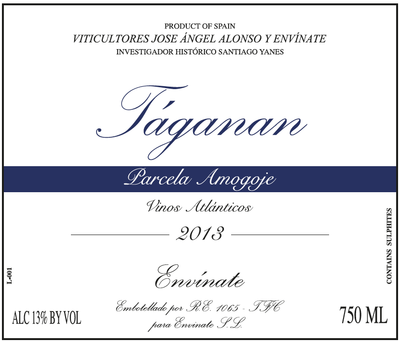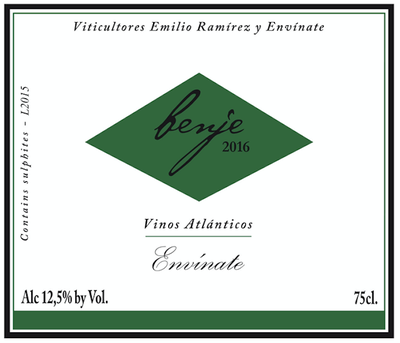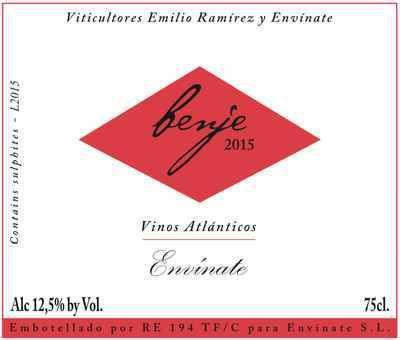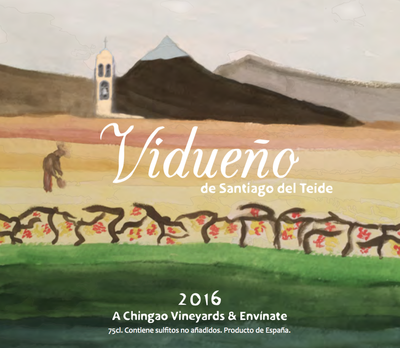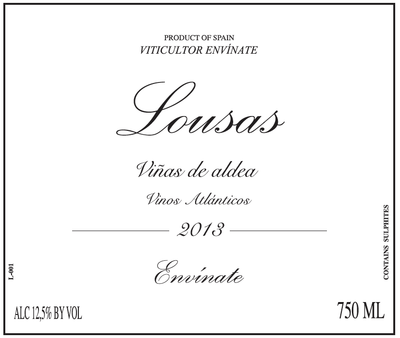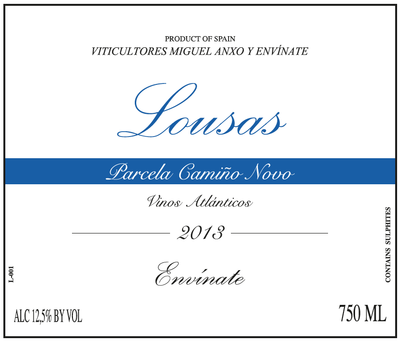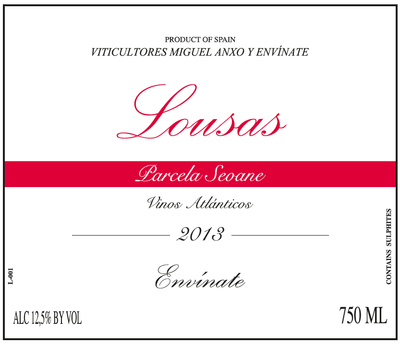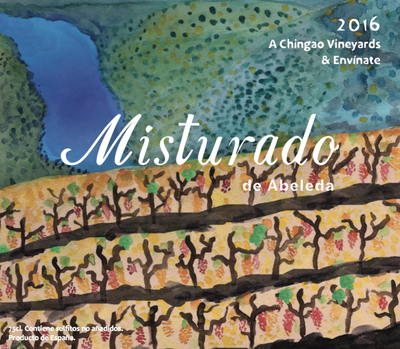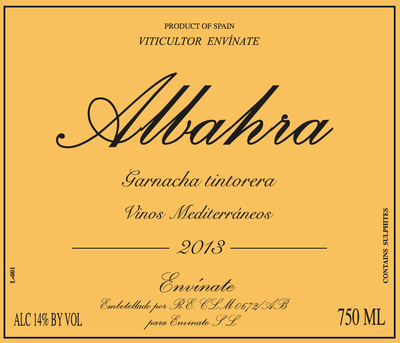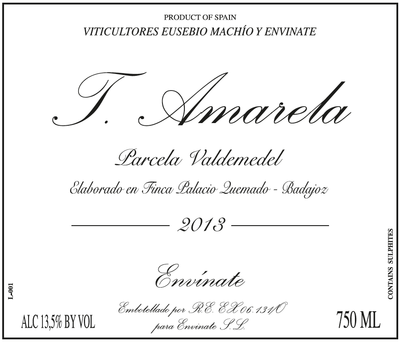EnvínateEnvínate (translates as "wine yourself") is the brainchild of 4 friends, winemakers Roberto Santana, Alfonso Torrente, Laura Ramos, and José Martínez. This gang of 4 formed back in 2005 while studying enology at the University of Miguel Hernandez in Alicante. Upon graduation, they formed a winemaking consultancy, which evolved into Envínate, a project that focuses on exploring distinctive parcels mainly in the Atlantic-inflected regions of Ribeira Sacra and the Canary Islands. Their collective aim is to make profoundly pure and authentic wines that express the terruño of each parcel in a clear and concise manner. To this end, no chemicals are used in any of the Envínate vineyards, all parcels are picked by hand, the grapes are foot-trodden, and the wines are fermented exclusively with wild yeasts, with a varying proportion of whole grape clusters included. For aging, the wines are raised in old barrels and concrete, and sulfur is only added at bottling, if needed. The results are some of the most exciting and honest wines being produced in Spain today.
The Wines Tenerife, Canary Islands Táganan - The old local name for the vineyard area located on the northeast side of Tenerife. In this area, the vineyards are planted “wild” on primary volcanic rock, on cliffs just above the Atlantic Ocean. The vineyards are very old and are mix planted with many different native grape varieties. Due to the rugged and difficult terrain, all farming has to be done by hand, and harvest is usually performed with the help of animals in order to be able to transport the grapes. Taganan Blanco This cuvee is made from many different white grape varieties native to the Canary Islands, some of them unidentified, but include Listan Blanco, Albillo Criollo, Marmajuelo, Gual, and Malvasia. The parcels are very old and planted in between 75-300 meters elevation right on the Atlantic Ocean and are farmed by 15 different families and Envínate. The viticulture in the Taganan area of Tenerife is very old-fashioned: the vines grow untrained, the soil is worked by hand, and no chemicals are used. The wine is fermented with wild yeasts by parcel, with some parcels getting a bit of skin contact, and then raised on the lees in steel vats and barrels for around 8 months. Taganan Tinto This cuvee is made from many different red grape varieties native to the Canary Islands, some of them unidentified, but include Listan Negro, Listan Gaucho, Malvasia Negro. The parcels are very old and planted in between 75-300 meters elevation right on the Atlantic Ocean and are farmed by 15 different families and Envínate. The viticulture in the Taganan area of Tenerife is very old-fashioned: the vines grow untrained, the soil is worked by hand, and no chemicals are used. The wine is wild yeast fermented with 30% whole grape clusters in open plastic tubs and concrete tanks; Raised in small tanks and used 225 and 500 liter barrels for around 8 months. Táganan Parcela Margalagua Margalagua, or “Mother of the Water”, is the name of a small single parcel organically farmed by viticultor José Angel Alonso and Envinaté. This treacherously steep vineyard site sits in between 150-250 meters elevation just above the Atlantic Ocean, on the north side of Tenerife. As was tradition with the very old vineyards on Tenerife, Margalagua is mix planted with many different indigenous grape varieties (too many to be named here) such as Listan Negro, Listan Prieto, Baboso, Negramoll, Malvasia Negra, etc. The vines are at least 100 years old, untrained (they grow wild on the ground), and planted on their own roots, as is typical of the phylloxera-free Canary Islands. This wine was fermented in old 500 liter barrels with the whole grape clusters included, and then raised in neutral 500 liter French oak barrels for 11 months. Santiago del Teide - Remarkable for its young volcanic soils, high altitude, precipitous cliffsides and intense solar radiation, Santiago del Teide is perched on the northwest slope of Mt. Teide. The vines here are untrained and the area has wide fluctuations in temperature and humidity during the year, with a dramatic diurnal shift. Benje Blanco is sourced from several old-vine, untrained pie franco parcels of Listan Blanco. Each parcel is hand-harvested and vinified separately in a mix of concrete tank and open tubs. 75% of the fruit is pressed directly off the skins, the other 25% is skin- macerated 14-40 days between 18-30C. The wine is then raised for 8 months in 60% concrete and 40% old French barriques on fine lees without battonage. Bottled without filtration. Benje Tinto is sourced from 1,000 meters elevation, old-vine, pie franco parcels of Listan Prieto (Mission) with a bit of Tintilla, named “Masca,” “La Zanja,” “Valle de Arriba,” and “Llano Redondo”, all of them located in Santiago del Teide. Each parcel is hand-harvested and vinified separately, some in concrete and some in small open tubs. Maceration is 10-30 days (depending on parcel) with daily punch-down; malolactic fermentation is in neutral French barriques, then raised 8 months in the same barrels without battonage. Bottling is without fining or filtration. Vidueño de Santiago del Teide is sourced from a tiny 0.15ha parcel of old-vine, untrained pie franc Listan Blanco and Listan Prieto. This co-planted parcel is hand-harvested, destemmed and macerated for 15 days in an open tub, then transferred to three old 228L French barriques to age for 8 months on fine lees without battonage or added SO2. Bottling is without fining, filtration or any added SO2. Due to its high elevation, this wine offers much less Atlantic character than their Taganan or Valle de La Orotava cuvées. Valle de la Orotava - Less a valley than the northwest slope of Teide that reaches down to the Atlantic Ocean, La Orotava was one of the first places planted to vines in Tenerife. Cooled by the trade winds and shaded by fog at higher altitude, it hosts ancient vines trained in the historic Cordón Trenzado. Palo Blanco is sourced from a 1.5ha vineyard of centenarian cordon trenzado (braided vines) Listan Blanco at 600m elevation, and is named for the area where it’s planted. The grapes are hand-harvested, pressed full cluster into large concrete tank off the skins and fermented without malolactic occurring, then raised in two Friulian 2500L oval foudres for 10 months. Bottling is without fining or filtration. Palo Blanco Parcela Las Molinas is a single parcel wine made from Listán Blanco vines in the Los Realejos vineyard that formerly went into the blend for Palo Blanco. Migan is sourced from two very old parcels of cordon trenzado (braided vines) Listan Negro. 60% comes from the La Habanera plot on volcanic sand at the highest elevation (600m) in the area, and 40% comes from the older San Antonio plot, lower on the slope (350m) and with more clay. The plots were hand-harvested, foot-trodden and fermented separately (La Habanera with 100% whole clusters, San Antonio 15% whole cluster) in large concrete vats, then into 228 & 600L old French barrels for malolactic and aging for 11 months. Bottling is without fining or filtration. Migan Chingao is sourced from the La Habanera parcel of Listán Negro that is also used for Migan. The wine ferments and ages in concrete tank and is bottled without sulfur addition. Tacoronte-Acentejo - The largest wine region in Tenerife, Tacoronte-Acentejo has a variety of soils and expositions. Envínate’s parcels in La Corujera are made up of 100+ year-old vines that are trained low to the ground. The area is planted to a wide range of varieties. La Santa de Úrsula is Negramoll, Listán Negro and a bit of Listán Blanco from three north-facing parcels of centenarian piè franco vines in the La Corujera area, ranging from 350-650m above sea level. The vines are planted on sand and clay soils over red basalt bedrock. The three parcels were harvested and fermented separately; a small portion were carbonically macerated and about 1/2 were fermented whole cluster, all in concrete. The wines were blended and rested for 8 months on their lees in 228L neutral French oak barrels, where malolactic fermentation completed naturally. Bottled unfined, unfiltered, with a small addition of sulfur. Ribeira Sacra Lousas - Is the name, in Galician dialect, or Gallego, for the type of slate soil that predominates in the Amandi sub-zone of the Ribeira Sacra region. Lousas Viña de Aldea: Aldea means “village” in Gallego; thus, this is Envínate’s “village wine”, produced from a combination of –minimum- 60-year-old plots located in the ancient vineyard region of Ribeira Sacra. This cuvee is made up of 90-95% Mencía with other co-planted varietals blended in. The native vines are grown on steep slopes made of slate and sit in between 400-600 meters elevation. Lousas Rosende: 85% Mencía, 15% other varieties (Garnacha Tintorera, Brancellao, Merenzao, Grao Negro, etc) from 28-60-year-old vines in the Rosende area on light, sandy decomposed granite soils interspersed with feldspar crystals. Alfonso notes that the soils here recall St. Joseph and Cornas in the northern Rhône. Lousas Doad: 89% Mencía, 10% other varieties (Garnacha Tintorera, Brancellao, Merenzao, Grao Negro, etc) from several vineyards in the town of Doade that range in age from 23-65 years. The lower vineyards are mainly schist, giving way to gneiss and quartz in the upper parts. Doade is a term protected by the Ribeira Sacra D.O., so the name of this wine is Doad. Lousas Parcela Camiño Novo: Camiño Novo, or “new road”, is a small single parcel located in the prime Amandi subzone of Ribeira Sacra. This parcel faces south-east, forming a small amphitheater at 430 meters elevation. The vines are 70 years old and is made up of 90% Mencía and 10% Garnacha Tintorera. According to Alfonso Torrente, a native to the area, Camiño Novo is a significantly cooler site for the area. Lousas Parcela Seaone: Seaone is a single parcel located in the Doade area of Amandi, Ribeira Sacra. Once again, the soils are pure slate. The vineyard faces south-west, and the vines are very old, at least 80 years of age. This site yields wines that are upfront and very Atlantic. Misturado de Abeleda is sourced from a centenarian parcel located in Ribeiras do Sil. This is a rare, mixed-planted parcel, with about 70% red and 30% white grapes. The grapes were hand-harvested, foot-trodden and co-fermented 1o0% whole cluster with wild yeasts in open top plastic tubs, then raised in used 300 and 400 liter French oak for 11 months with no racking. The finished wine is bottled without fining, filtration or added SO2. A throwback to Ribeira Sacra's early days. The Levant Linit is 100% Pardillo, and ancient and rare white grape native to Albacete. The grapes are from a vineyard of centenarian vines at 700m elevation in the Almansa area, which was at one point a shallow sea. Today, the soils are clay with an abundance of pebbles on the surface and a chalk base. The grapes were harvested by hand and directly pressed, then fermented spontaneously with native yeasts in concrete tanks for 10-15 days without temperature control. After alcoholic fermentation, a part of the wine is moved to neutral 350L barrels. In concrete and barrel the wine goes through malolactic conversion and rests for 8 months before bottling without fining or filtering and with just a small addition of SO2. Albahra (Castilian for “small sea”) is named for the vineyard area in the Almansa region close to the town of Albacete, located at the southeastern tip of Castilla-La Mancha. A blend of 70% Garnacha Tintorera and 30% Moravia Agria. The Garnacha Tintorera (aka Alicante Bouschet, a red-juiced grape) is from a 3ha parcel vineyard on clay/calcareous soils. The Moravia Agria (a high-acid, low alcohol blending grape) is from a single vineyard on sandy clay-calcareous soils in neighboring Manchuela, which is pruned to get larger grapes, since there is only around 50ha of Moravia Agria left in Spain. All grapes are hand-harvested and vinified separately by parcel. The Garnacha Tintorera is foot-trodden in vat with 30-50% stems included and 6-10 days skin maceration, then fermented and raised on fine lees in concrete for 8 months. The Moravia Agria is completely destemmed and sees 7 days maceration before being pressed and raised on fine lees in 228L used French barriques for 8 months, all without battonage. The wine is then blended and bottled unfined, unfiltered and with very little SO2 addition. Albahra Chingao comes from the highest and oldest parcel that is used for Albahra and is 100% Garnacha Tintorera. It fermented with a high proportion of whole clusters in concrete tank, and rested in the same vessel before bottling without sulfur addition. |
General Info
Tech SheetsEnvínate Tenerife
Vintage ReportsGallery |
